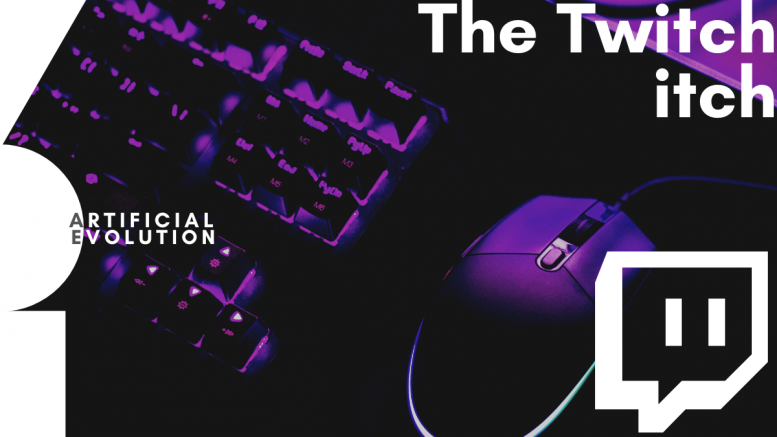There is no point wasting time thinking about the social media hole we have dug for ourselves – as marketers and as users. The social media conundrum continually keeps adding new platforms to “expand the experimentative and creative scope” of first content creators who are duly followed by marketers. There is little left to do aside from deep-diving into the social media mix and identifying room for opportunity and today, we discuss the opportunity presented by Twitch.
What is Twitch?
What started as Justin.tv in 2005 soon evolved to a highly popular platform (re-named) Twitch in 2011. In just its first year as a standalone platform, Twitch grew exponentially garnering no less than 3 million unique visitors month on month. Before we get ahead of ourselves, here is a quick definition: Twitch is an online video streaming platform that enables creators to live-stream their content that is catered to a dedicated audience base. Today, it has undoubtedly secured its place as one of the most influential streaming platforms out there. The numbers alone make it a prominent reason why it cannot be discarded (at least without careful consideration). As of December 2021, the platform was boasting more than 7 million active streamers. The company currently dominates the sphere of online game streaming with over 72% market share with regard to viewership – smoothly beating out the intense competition from YouTube and Facebook Gaming.
Before marketers out there scratch their heads trying to find a way to “fit” their brands into the gaming community, it will be of some assistance to know that (thankfully) Twitch is not an exclusive gaming platform. The platform also hosts streamers who create content in diverse spheres such as music, cooking, anime, makeup, etc.
Why Twitch is Tricky
Without sugar-coating, lets present the notion that is inviting a lot of debate: Twitch is associated with smutty content. And if you scroll through the comments on 9GAG you will quickly realise that the early viewership of the platform is not enjoying this transition. A simple search on YouTube will reveal the perceptions held by streamers (and plenty are talking about it) explaining why this has become a problem. As you may have guessed, the primary issue is the declining viewership of those streamers who have been using the platform since its inception to live-stream their gaming. In an attempt to address the concern of the streamers, Twitch decided to ban two prominent broadcasters who streamed “overtly sexual” content on the platform. However, this has not been the “end all” situation when it comes to soft porn on Twitch.
Another facet of Twitch is that it has carved a niche for itself: live-streaming podcasts. The common string of reference in podcasts and Twitch is that both boast a young audience profile. According to the “Super Listeners” survey by Edison Research, Podcast One and Ad Results Media, the active audiences (listeners) on podcasts are a lot more receptive to ads. Connecting the two elements, it can be safely assumed that Twitch may be well on its way to creating a new wave of thought leadership by reimagining podcasting. The talk shows on Twitch are rising in popularity amongst podcasters for two primary reasons: it enables more interactivity and more visibility.
How to Market on Twitch?
The dichotomy in the previous section is presented so brands and marketers can judge for themselves whether or not Twitch can be added to their tools of marketing mix. If the answer is yes, here is your how-to guide to get you started on Twitch:
- Understand the Streamer Profile: While Twitch has been welcoming streamers from diverse domains, it is essentially targeted at the gaming audience. The reason why viewers are hooked to the platform is because they are interested in video games, and by association, the players who are skilled with their game. Additionally, the personality of streamers on Twitch is particularly engaging which further keeps the viewers engaged.
- Understand the Twitch User: The demographics of Twitch are such that 65% of the users are male and 35% are female. A large portion of these viewers are between the ages of 16 to 34. This means that if the target audience of the brand is young, Twitch may be a great platform to get them interested in your brand.
- Don’t Undervalue Entertainment: Although Twitch has regular advertising options such as banner ads and mid-rolls, the best way to engage audiences on Twitch is by entertaining them by partnering with an influencer or a brand. Learning about a product from streamers feels more personal to audiences on Twitch and is, therefore, better preferred.
To conclude, the question of whether or not to use Twitch remains with the marketer based on the distinctiveness of their brand and its audiences. However, what cannot be denied is that Twitch presents a great opportunity to interact with the audiences – something that is truly valuable (especially as it is not easily accessible) to marketers.
Stay curious. Stay secure.
See you next week.
The views and opinions published here belong to the author and do not necessarily reflect the views and opinions of the publisher.



Be the first to comment on "The Twitch itch"